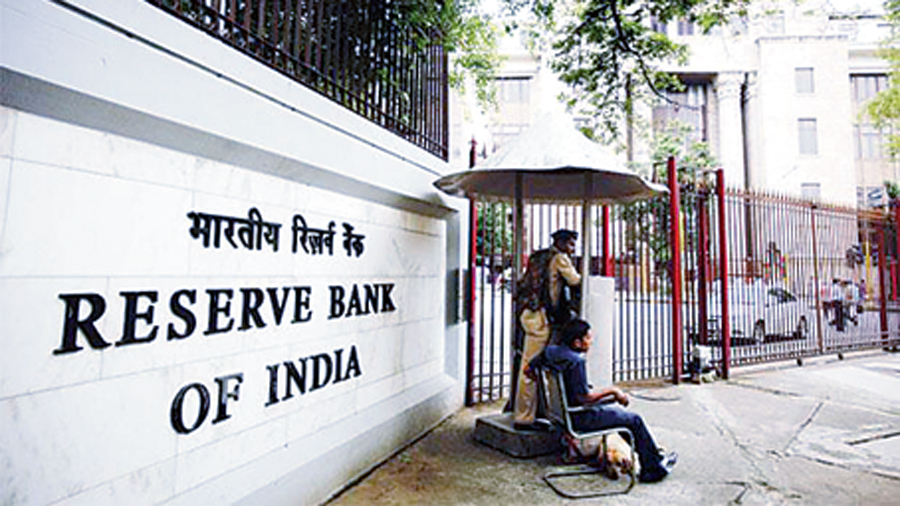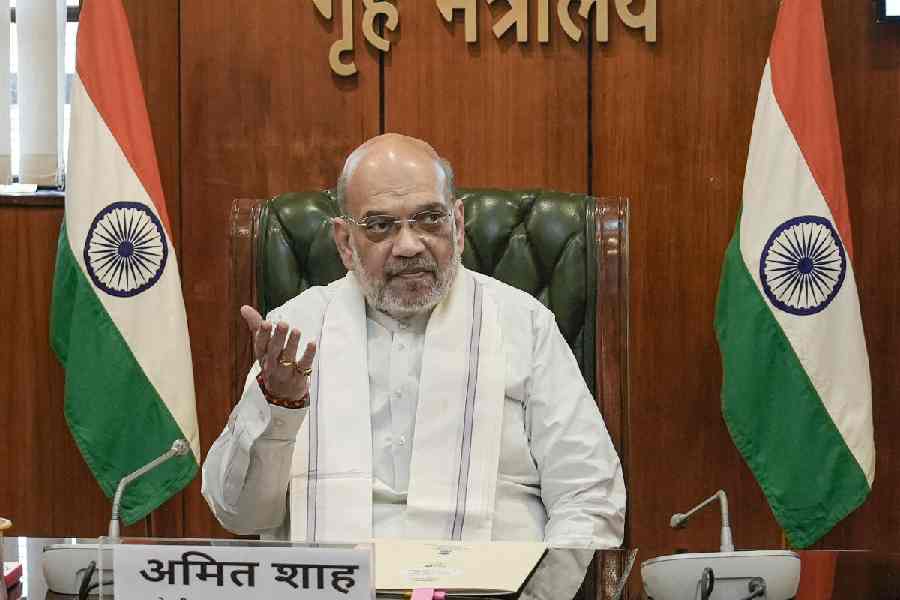The monetary policy committee (MPC) has retained its growth focus on hopes that the high rate of inflation will recede in the second half of this fiscal thereby giving it more space for further rate cuts, the minutes of the first meeting of the reconstituted panel showed on Friday.
Earlier this month, the government had appointed Ashima Goyal, Shashanka Bhide and Jayanth R. Varma as external members of the interest rate setting panel. The three-day meeting of the committee, which ended on October 9, saw them keeping the repo rate unchanged at 4 per cent though the accommodative stance was maintained. The RBI released minutes of the meeting on Friday.
The CPI-based retail inflation had risen to an eight-month high of 7.34 per cent in September, largely due to rising prices of food items.
It has stayed above the medium term inflation target given to the panel.
While the minutes did indicate the dovish tilt of the panel, a key highlight was that the discussions also saw the mention of the management of government borrowing, availability of liquidity, real negative interest rates and steep yields which do not fall under the purview of the panel.
It also saw a dissent from Varma, who disagreed with the wording of the forward guidance given by the committee.
The MPC had said that it had “decided” to continue with the accommodative stance as long as necessary — at least during the current financial year and into the next financial year — to revive growth on a durable basis and mitigate the impact of Covid-19 on the economy, while ensuring that inflation remains within the target going forward.
Varma, who felt that the date based forward guidance is not a decision but an expectation, said the committee should say that it expects to maintain a low policy rate and an accommodative stance during the current financial year and well as into the next financial year.
Board meets
The RBI’s central board on Friday held a meeting to discuss, among other things, the economic situation and other challenges. The meeting, which was held through video conferencing, also deliberated on the issues concerning financial stability in the present context.
“The board reviewed the current economic situation, continued global and domestic challenges and various areas of operations of the Reserve Bank,” the RBI said.
The board also discussed the working of sub-committees of the central board and the local boards and deliberated on the aspects related to financial stability in the present milieu," the RBI said in a release.
“In a world that is full of unpleasant surprises, the MPC must out of necessity be data driven... In practice, I suspect that the word ‘decided’ only means an intention to remain accommodative as long as realised outcomes do not diverge drastically from what is currently expected. I am firmly of the view that the MPC risks a damage to its credibility when it uses words that do not accurately reflect what it means,’’ a blunt Varma said.
Varma who is a well-known figure in financial circles also raised the subject of India having the steepest yield curves in the world.
Pointing out that the yield curve here is extremely high beyond a maturity of about a year, he observed that for monetary policy to have the desired impact, it is desirable that the forward guidance should extend beyond the one year horizon at which the steepness of the yield curve sets in and that forward guidance of six months in the MPC resolution is 'suboptimal’.
"It appears to me that the steep yield curve reflects a lack of credibility of the MPC’s existing accommodative guidance’’, he said while noting that excessively high long term rates are inflicting damage to the economy.
Among other members, RBI executive director, Mridul Saggar raised the plight of savers when he said that retail fixed deposit rates are currently ranging between 4.90-5.50 per cent for tenors of 1-year or more and the headline inflation have been prevailing above that for some months now, thereby giving them a negative carry. He cautioned that if current real negative interest rates fall further, it may generate significant distortions that could adversely affect aggregate savings, current account and medium-term growth in the economy.
He added that headline inflation should start softening from October. Apart from favourable base effects, the unlocking has picked speed and would significantly reduce supply chain bottlenecks causing both agriculture and non-agricultural prices to correct.
Ashima Goyal who is seen as a dove, was of the view that though inflation is at present above the target band, it is expected to come down and therefore no change in the policy rate is appropriate and that one should await impact of on-going supply-side improvement, as well as for uncertainty around COVID-19 to dissipate. She added that while there is scope for further prudent expansion of government spending to boost demand and trigger private spending to raise growth, there is a need to keep the cost of government borrowing low.
Dr Michael Patra, deputy governor, RBI said that if the projections of real GDP for 2020-21 (-9.5 per cent) made by the committee hold, the level of GDP would have fallen by around 6 per cent below its pre-COVID level by the end of 2020-21 and it may take years to regain this lost output.
He cautioned that the COVID curve is arching inwards, from the cities where infections had hitherto festered, into interior regions. The fear of a second wave looms over India and the country with the second highest caseload of infections and over-stretched healthcare infrastructure, cannot be immune.
"In the absence of intrinsic drivers, the recovery may last only until pent-up demand has been satiated and replenishment of inventories has been completed...with unprecedented contractions in economic activity and elevated inflation posing a razor’s edge trade-off fraught with uncertainty, forward guidance has to be clear and decisive’’, he observed.
On the other hand, RBI Governor Shaktikanta Das felt that there exists space for future rate cuts if the inflation evolves in line with the central bank’s expectations.
"This space needs to be used judiciously to support recovery in growth. Meanwhile the ongoing transmission of past monetary policy actions would help ease financial conditions further..With the supply side disruptions that are seen to drive the current inflationary pressures likely to be transient and wane out in months ahead as economy normalises, there is merit in looking through the current high levels of inflation and persevere with the accommodative stance for monetary policy as long as necessary to revive growth on a durable basis ’’, he said while adding that there are downside uncertainties that could put sand in the wheels of a nascent recovery seen lately.











